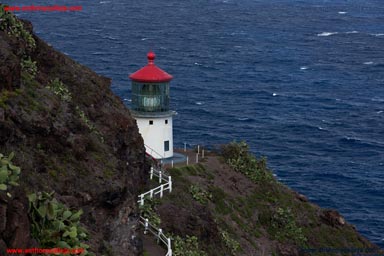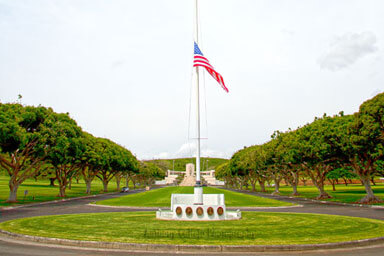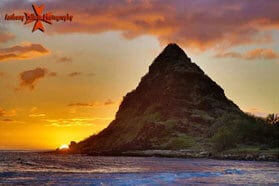The pictured statue stands prominently in front of Aliʻiolani Hale in Honolulu, Hawaii. The statue had its origins in 1878 when Walter M. Gibson, a member of the Hawaiian government at the time, wanted to commemorate the 100-year arrival of Captain Cook to the Hawaiian Islands. The legislature appropriated $10,000 for the project and made Gibson the director of the project, which originally included native Hawaiians but they soon were off the project and Gibson ran the project by himself. Gibson contacted Thomas R. Gould, a Boston sculptor living abroad in Florence, Italy to create the statue.The ʻIolani Palace was the royal residence of the rulers of the Kingdom of Hawaii beginning with Kamehameha III under the Kamehameha Dynasty (1845) and ending with Queen Liliʻuokalani (1893) under the Kalākaua Dynasty, founded by her brother, King David Kalākaua. It is located in the capitol district of downtown Honolulu in the U.S. state of Hawaiʻi. It is now a National Historic Landmark listed on the National Register of Historic Places. After the monarchy was overthrown in 1893, the building was used as the capitol building for the Provisional Government, Republic, Territory, and State of Hawaiʻi until 1969. The palace was restored and opened to the public as a museum in 1978. The 'Iolani Palace is the only royal palace on US soil.Diamond Head is a volcanic tuff cone on the Hawaiian island of Oʻahu and known to Hawaiians as Lēʻahi, most likely from lae'browridge, promontory' plus ʻahi 'tuna' because the shape of the ridgeline resembles the shape of a tuna's dorsal fin.Its English name was given by British sailors in the 19th century, who mistook calcite crystals on the adjacent beach for diamonds.Makapuʻu Point Lighthouse is a 46-foot-tall (14 m), active United States Coast Guard lighthouse established in 1909. Construction for the lighthouse was prompted by the grounding of the steamer Manchuria in the predawn hours on August 20, 1906 on the reefs off Waimānalo. The lighthouse was automated in 1974 and its keepers quarters demolished in 1987, but the remnants are still visible. The lighthouse contains a roughly 12-foot-tall (3.7 m) French Fresnel hyper-radial lens, the largest lens in use in the United States. The lens is able to magnify and intensify the illumination of a single electrical 1,000-watt, 120-volt light bulb. It was damaged by a vandal firing a bullet at it, but the lens is still in service as it is no longer reproducible. A popular day hike along the access road to the lighthouse begins at a parking lot located south of the Makapuʻu lookout on Kalanianaole Highway. A second trail leads from the remnants of the keepers quarters to the lighthouse, but it is off limits to the public. The lighthouse itself is also off limits to the public and is protected by three locked gates.Nuʻuanu Pali is a section of the windward cliff (pali in Hawaiian) of the Koʻolau mountain located at the head of Nuʻuanu Valley on the island of Oʻahu. It has a panoramic view of the windward (northeast) coast of Oʻahu. The Pali Highway (Hawaii State Highway 61) connecting Kailua/Kāneʻohe with downtown Honolulu runs through the Nuʻuanu Pali Tunnels bored into the cliffside. The area is also the location of the Nuʻuanu Freshwater Fish Refuge and the Nuʻuanu Reservoir in the jurisdiction of the Hawaiʻi Department of Land and Natural Resources. The Nuʻuanu Pali State Wayside is a lookout above the tunnels where there is a panoramic view of the Oʻahu's windward side with views of Kāneʻohe, Kāneʻohe Bay, and Kailua. It is also well known for strong trade winds that blow through the pass (now bypassed by the Nuʻuanu Pali Tunnels).Pearl Harbor is a lagoon harbor on the island of Oahu, Hawaii, west of Honolulu. It has been long visited by the Naval fleet of the United States, before it was acquired from the Hawaiian Kingdom by the U.S. with the signing of the Reciprocity Treaty of 1875. Much of the harbor and surrounding lands is now a United States Navy deep-water naval base. It is also the headquarters of the United States Pacific Fleet. The U.S. government first obtained exclusive use of the inlet and the right to maintain a repair and coaling station for ships here in 1887. The attack on Pearl Harbor by the Empire of Japan on December 7, 1941, was the immediate cause of the United States' entry into World War II.The USS Arizona Memorial, at Pearl Harbor in Honolulu, Hawaii, marks the resting place of 1,102 of the 1,177 sailors and Marines killed on USS Arizona (BB-39) during the Japanese surprise attack on Pearl Harbor on December 7, 1941 and commemorates the events of that day. The attack on Pearl Harbor and the island of Oʻahu led to the United States' direct involvement in World War II. The memorial, built in 1962, is visited by more than two million people annually. Accessible only by boat, it straddles the sunken hull of the battleship without touching it. Historical information about the attack, shuttle boats to and from the memorial, and general visitor services are available at the associated USS Arizona Memorial Visitor Center, which opened in 1980 and is operated by the National Park Service. The battleship's sunken remains were declared a National Historic Landmark on May 5, 1989. The USS Arizona Memorial is one of several sites in Hawaii and elsewhere that are part of the World War II Valor in the Pacific National Monument.Upon the deck of the battleship USS Missouri in Tokyo Bay, the Japanese surrendered to United States General Douglas MacArthur and Admiral Chester W. Nimitz, ending World War II. In 1999, Missouri was moved to Pearl Harbor from the United States west coast and docked behind, and in line, with the USS Arizona, placing it perpendicular to the USS Arizona Memorial. The pairing of the two ships became an evocative symbol of the beginning and end of the United States' participation in the war.USS Arizona Memorial staff initially criticized the placement of the Missouri, saying the large battleship would "overshadow" the ArizonaMemorial. To guard against this perception, Missouri was placed well back of the Arizona Memorial, and positioned in Pearl Harbor to prevent those participating in military ceremonies on Missouri's aft decks from seeing the Arizona Memorial. The decision to have Missouri's bow face the Memorial was intended to convey that the Missouri now watches over the remains of the Arizona so that those interred within the Arizona's hull may rest in peace. These measures have helped preserve the identities of the Arizona Memorial and the Missouri Memorial, thereby improving the public's perception of having Arizona and Missouri in the same harbor.The National Memorial Cemetery of the Pacific (informally known as Punchbowl Cemetery) is a national cemetery located at Punchbowl Crater in Honolulu, Hawaii. It serves as a memorial to honor those men and women who served in the United States Armed Forces, and those who have given their lives in doing so. It is administered by the National Cemetery Administration of the United States Department of Veterans Affairs and is listed on the National Register of Historic Places. Millions of visitors visit the cemetery each year, and it is one of the most popular tourist attractions in Hawaii.Hānaiakamalama or Queen Emma Summer Palace, served as a retreat for Queen Emma of Hawaii from 1857 to 1885, as well as for her husband King Kamehameha IV, and their son, Prince Albert Edward. It is a now a historic landmark, museum, and tourist site located at 2913 Pali Highway, less than a ten-minute drive outside of downtown Honolulu, Hawaii. The Bernice Pauahi Bishop Museum, designated the Hawaiʻi State Museum of Natural and Cultural History, is a museum of history and science located in the historic Kalihi district of Honolulu on the Hawaiian island of O'ahu. Founded in 1889, it is the largest museum in Hawai'i and has the world's largest collection of Polynesian cultural artifacts and natural history specimens. Besides the comprehensive exhibits of Hawaiiana, the museum's total holding of natural history specimens exceeds 24 million, of which the entomological collection alone represents more than 13.5 million specimens (making it the third-largest insect collection in the United States). An eternal flame is a flame, lamp or torch that burns continuously for an indefinite period. Most eternal flames are ignited and tended intentionally, but some are natural phenomena caused by natural gas leaks, peat fires and coal seam fires, all of which can be initially ignited by lightning, piezoelectricity or human activity, some of which have burned for thousands of years. In ancient times, eternal flames were fueled by wood or olive oil; modern examples usually use a piped supply of propane or natural gas. Human-created eternal flames most often commemorate a person or event of national significance, serve as a symbol of an enduring nature such as a religious belief, or a reminder of commitment to a common goal, such as diplomacy.Washington Place is a Greek Revival palace in the Hawaii Capital Historic District in Honolulu, Hawaiʻi. It was where Queen Liliʻuokalani was arrested during the overthrow of the Hawaiian Kingdom. Later it became the official residence of the Governor of Hawaiʻi. It is a National Historic Landmark, designated in 2007. The current governor's residence was built in 2008 behind the historic residence, and is located on the same grounds as Washington Place.The Hawaii State Capitol is the official statehouse or capitol building of the U.S. state of Hawaii. From its chambers, the executive and legislative branches perform the duties involved in governing the state. The Hawaii State Legislature—composed of the twenty-five member Hawaii State Senate led by the President of the Senate and the fifty-one member Hawaii State House of Representativesled by the Speaker of the House—convenes in the building. Its principal tenants are the Governor of Hawaii and Lieutenant Governor of Hawaii, as well as all legislative offices and the Legislative Reference Bureau. Located in downtown Honolulu, the Hawaii State Capitol was commissioned and dedicated by John A. Burns, second Governor of Hawaii. It opened on March 15, 1969, replacing the former statehouse, the ʻIolani Palace.





















